Many of us have heard of the famous rock shelters and elaborate cave paintings from the Mesolithic period in Bhimbetka near Bhopal in Madhya Pradesh. However, you will be surprised to know that there is a similar network of rock shelters scattered across the last remaining sandstone hillocks in the villages near Fatehpur Sikri, under an hour from Agra.
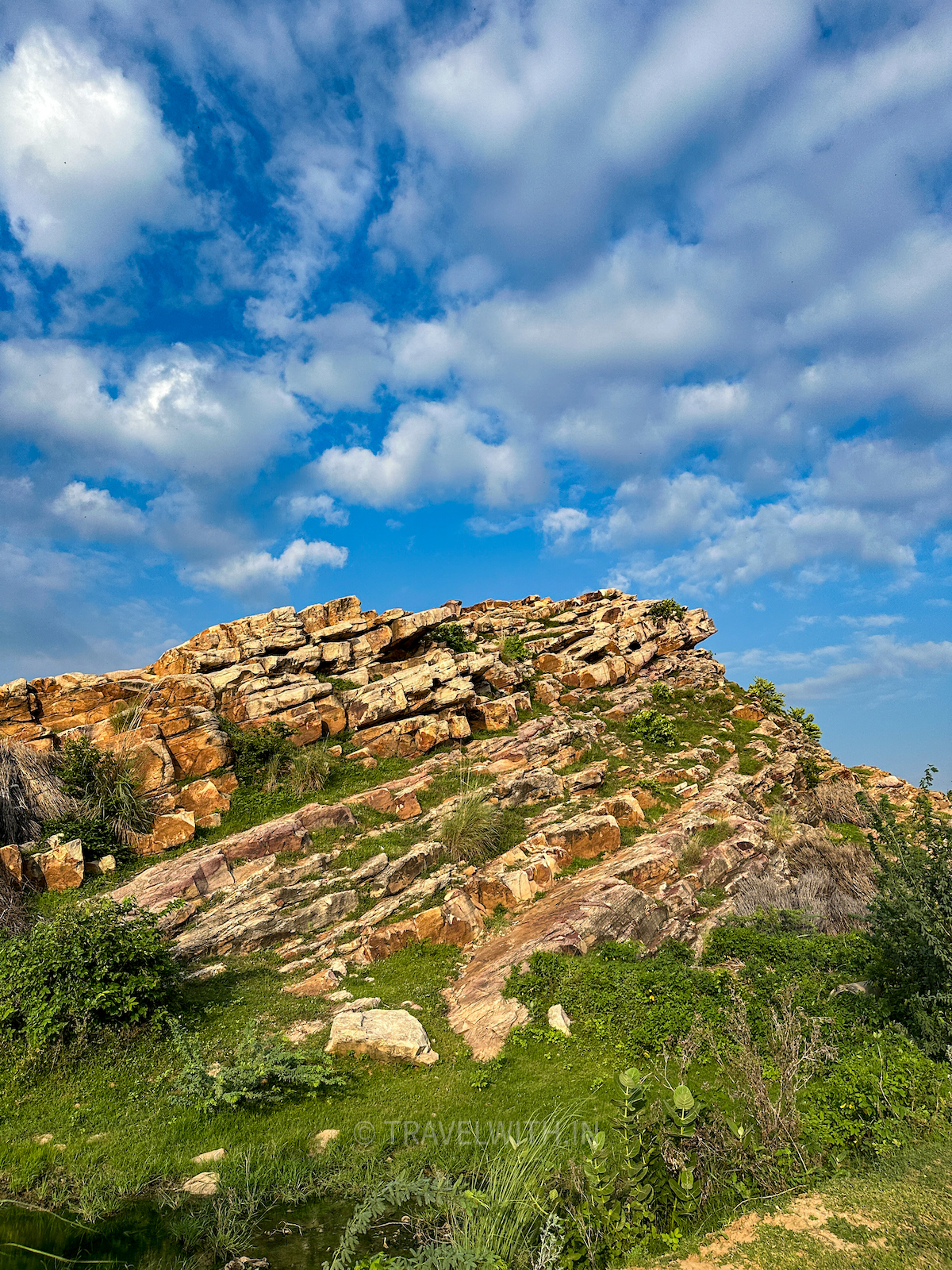
Nai ki Bhoot a hillock with Rock Paintings
Most of these hillocks have been mined for the stone but the few remaining are being protected after an order issued by the Supreme Court in India. These hillocks have open air caves that have paintings claimed to be from the Mesolthic period (+3,000 BC). We believe these pre-historic cave paintings were discovered in the 1970s, however, no work was (and has been to date) undertaken to protect and conserve them. Some caves have been vandalised and/or the art has faded over time.
There are three prominent villages in the vicinity of Fatehpur Sikri. It is believed that there are several other locations where these paintings still exist. A word of advice before you take it upon yourself to visit these places. Approaching these locations is tricky as the roads are through farmland, very narrow and not cemented. Post rains would be the worst time to visit. Villagers don’t know the origin of these paintings so don’t expect an elaborate and intelligent narrative from them. It is also not recommended to be in this area on your own once it gets dark.
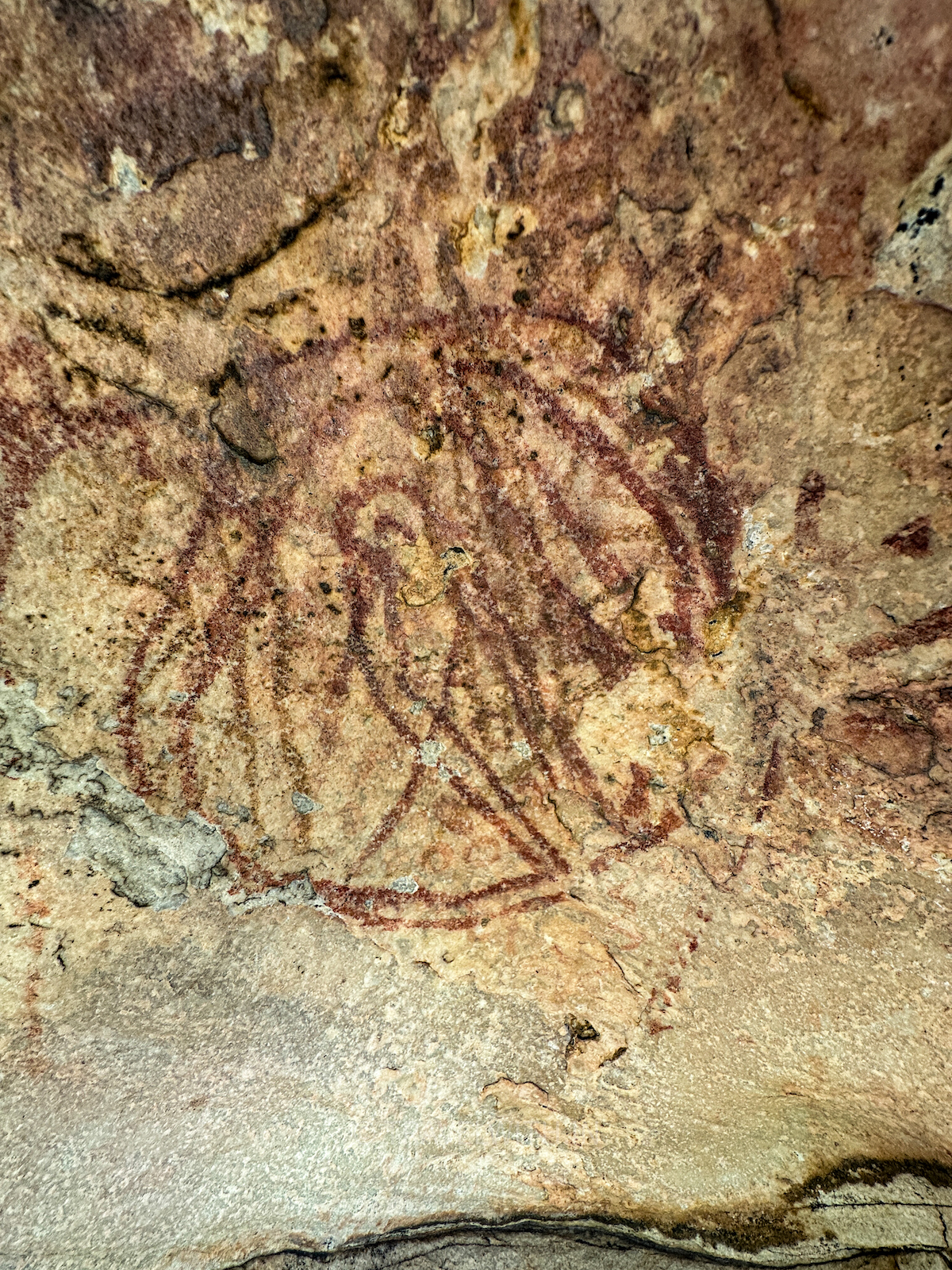
A parakeet in a cage
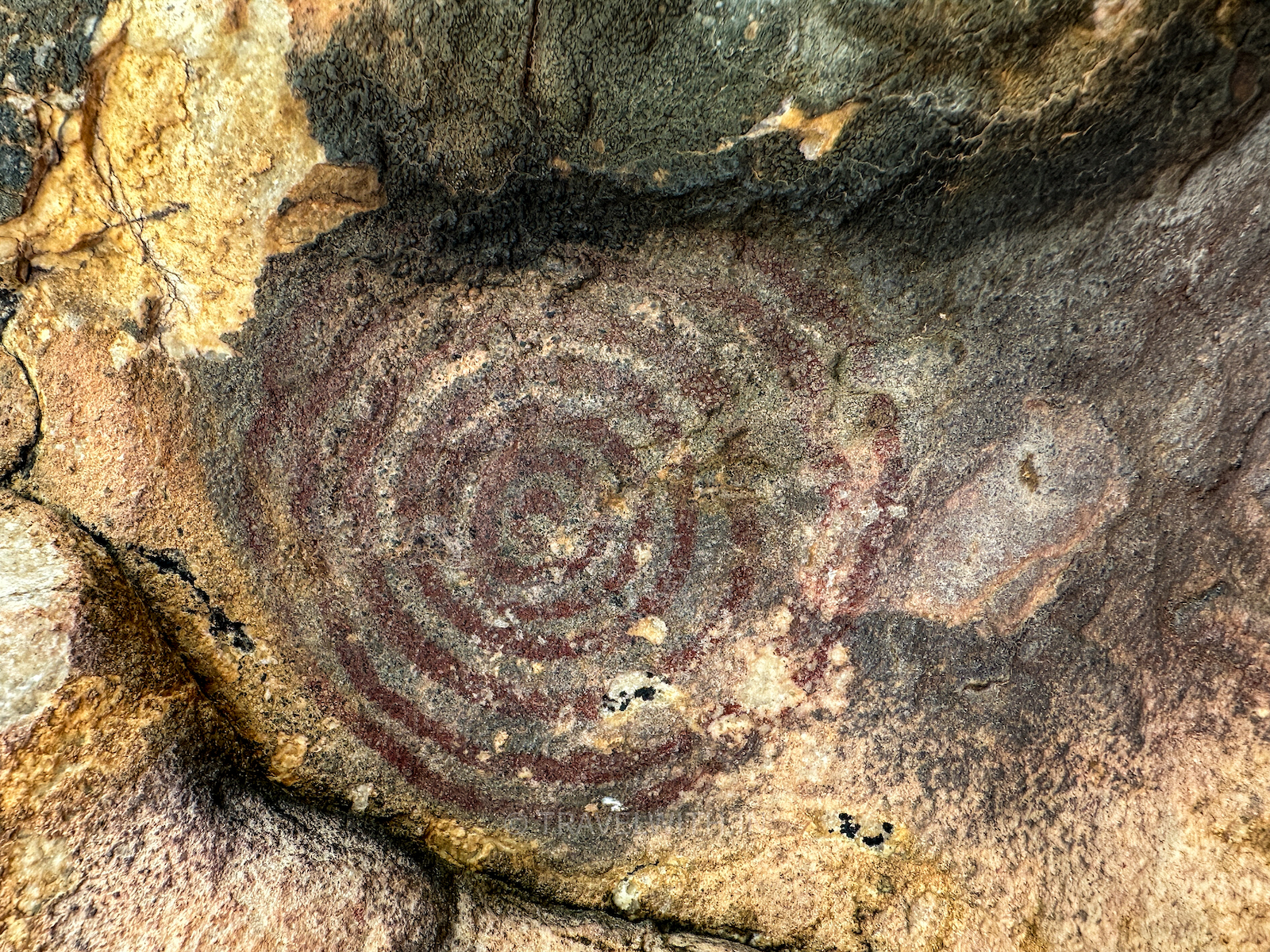
Circle of Life?
For those of you with mobility issues, the steep climb up these hillocks will be a challenge. For those with vertigo, you will not be able to access some of the caves as you will have to walk on narrow rocky ledges with a drop of approximately 100-150 feet. In one of the caves you have to crawl or hunker down on your belly to get inside. Plus, there is a risk of falling off these rock caves so please go slow and one at a time rather than in large numbers.
Sounds like mission impossible but when you think of it, the humans who inhabited these caves handpicked these locations primarily for their inaccessibility. They wanted to ensure their safety was not compromised by wild animals and their enemies. They had a vantage point from where they could see far beyond and the caves were deep enough to hide them should they sense danger approaching. If the unwanted did make it up the hill, the entrance to the caves were narrow enough to allow only one individual to enter giving the resident cave inhabitants enough time to strike that individual down.
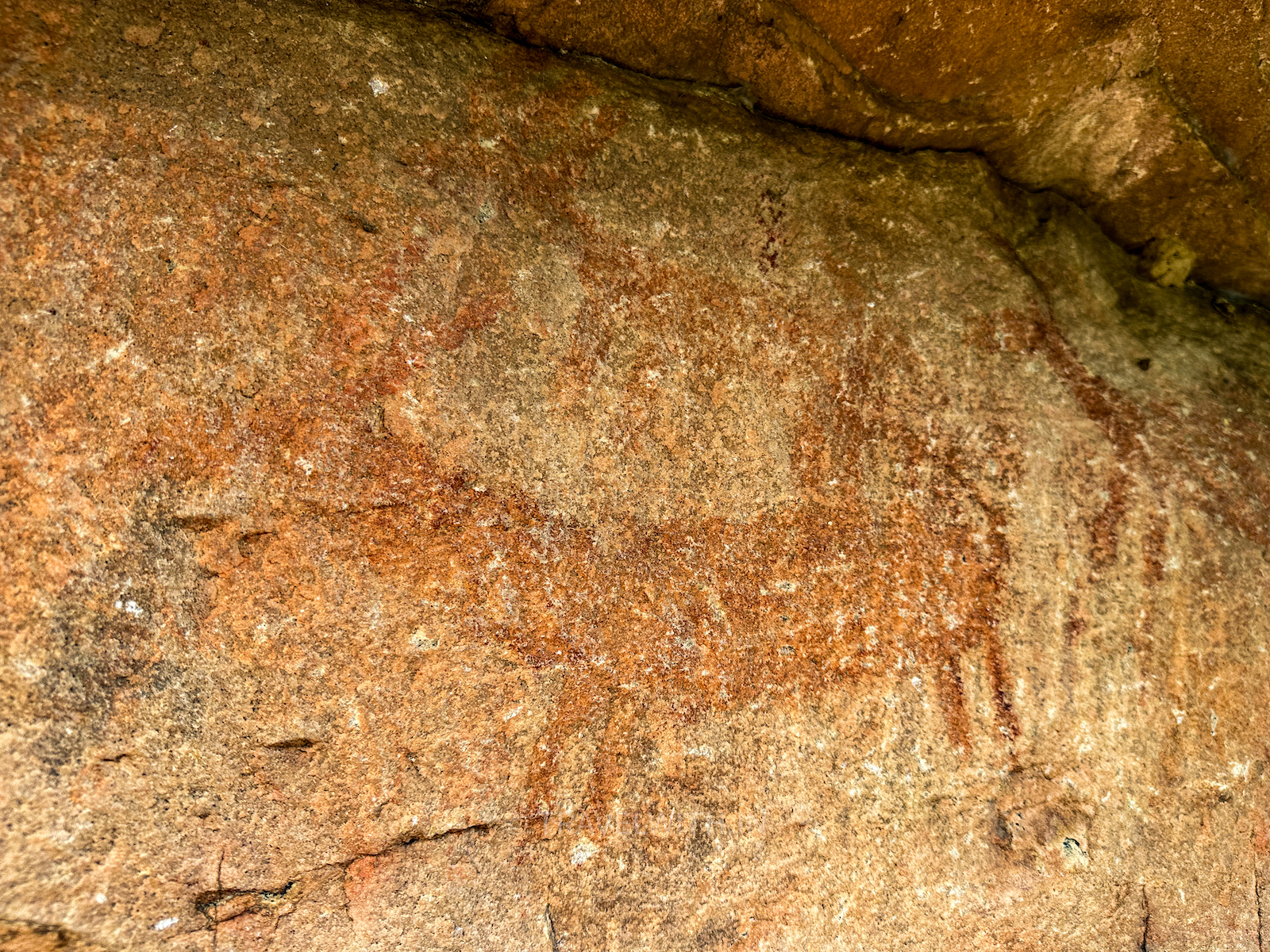
A deer or antelope
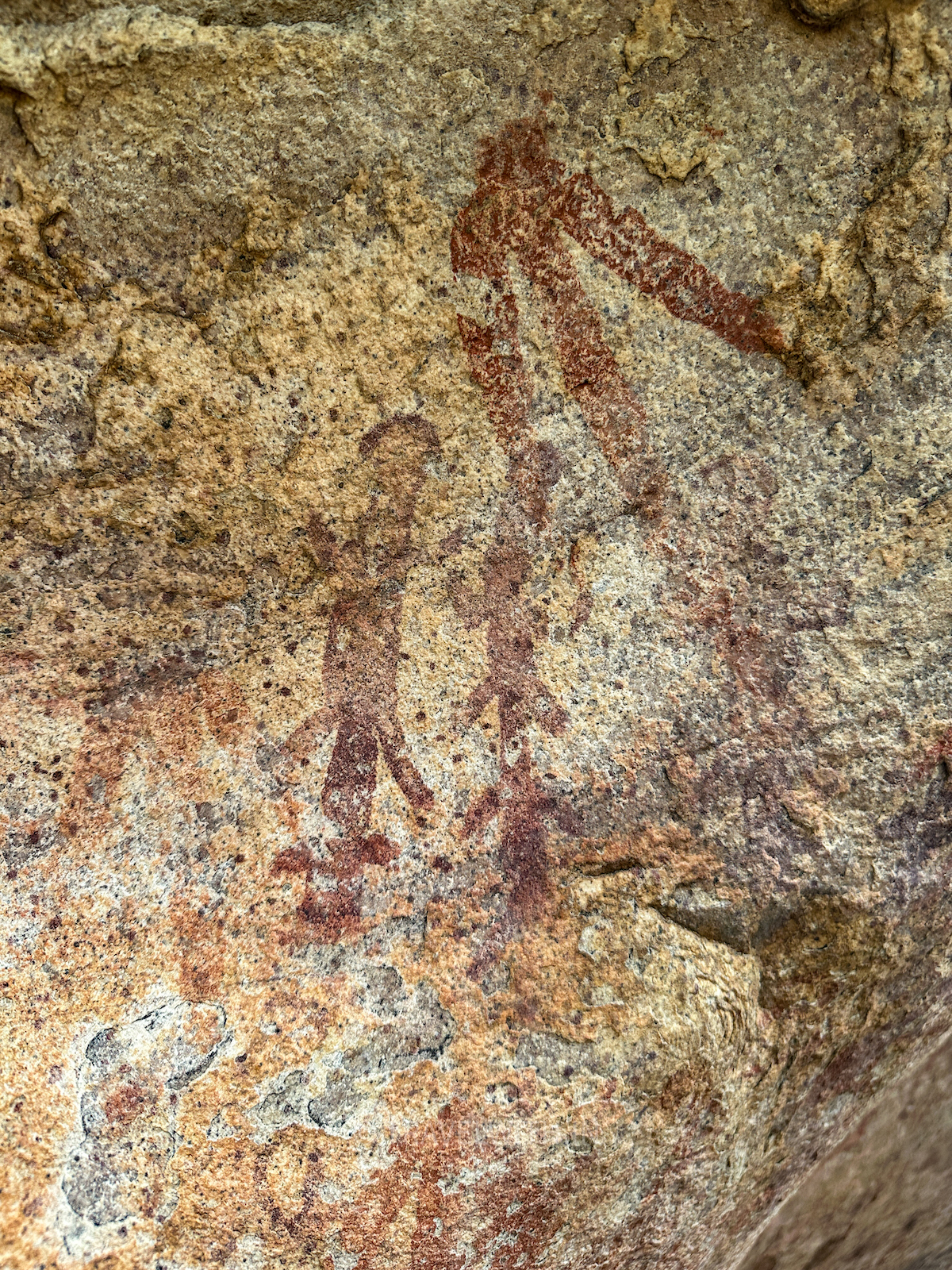
People procession
The paintings we saw primarily depicted wild animals, people, bullock carts, mystical figures (looks like a bulls eye but could also be the circle of life) and a procession. One of the caves even depicted a bird in a cage, perhaps this was painted much later than the others. The colors used are red ochre and black. When asked, the locals knew nothing of these cave paintings. An elderly man who was from the village said that the paintings were drawn several hundreds of years ago by a bride who languished the death of her family that perished when a huge piece of rock fell on them. They were apparently on their way to the groom’s house.
There is lack of credible documentation on the origin, meaning and symbolism of these cave paintings. The cave paintings are also not protected and their existence is threatened as more and more hands touch them. The area is used by cattle herders and local kids use the caves for their amusement. If no serious effort is undertaken by the government to protect and conserve these historical sites, w have no doubt that they will be lost very soon. Please leave a comment below if you have more information about these paintings, have studied and provided credible commentary or have older photographs.
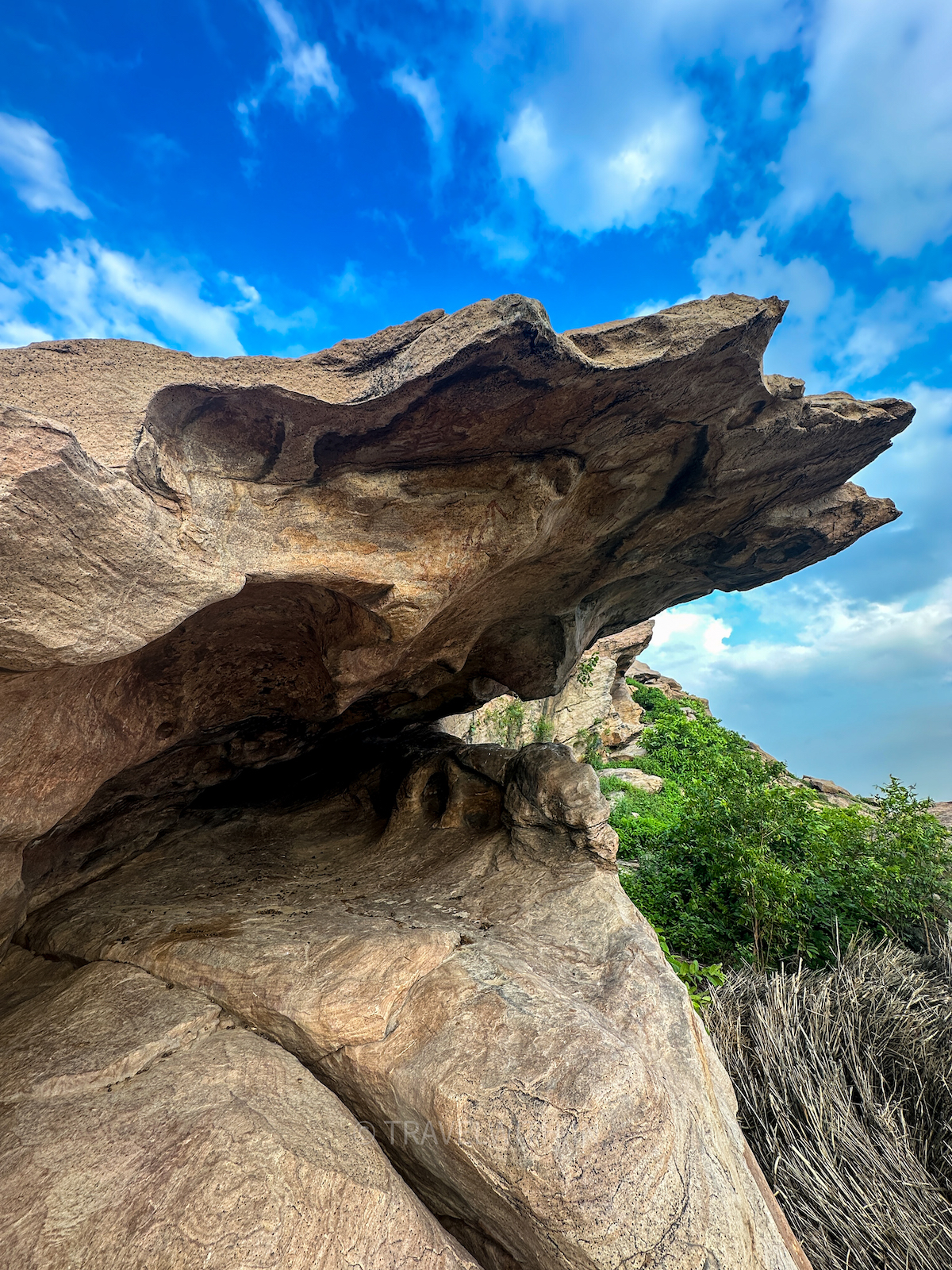
Narrow and steep access to one of the rock caves



0 Comments